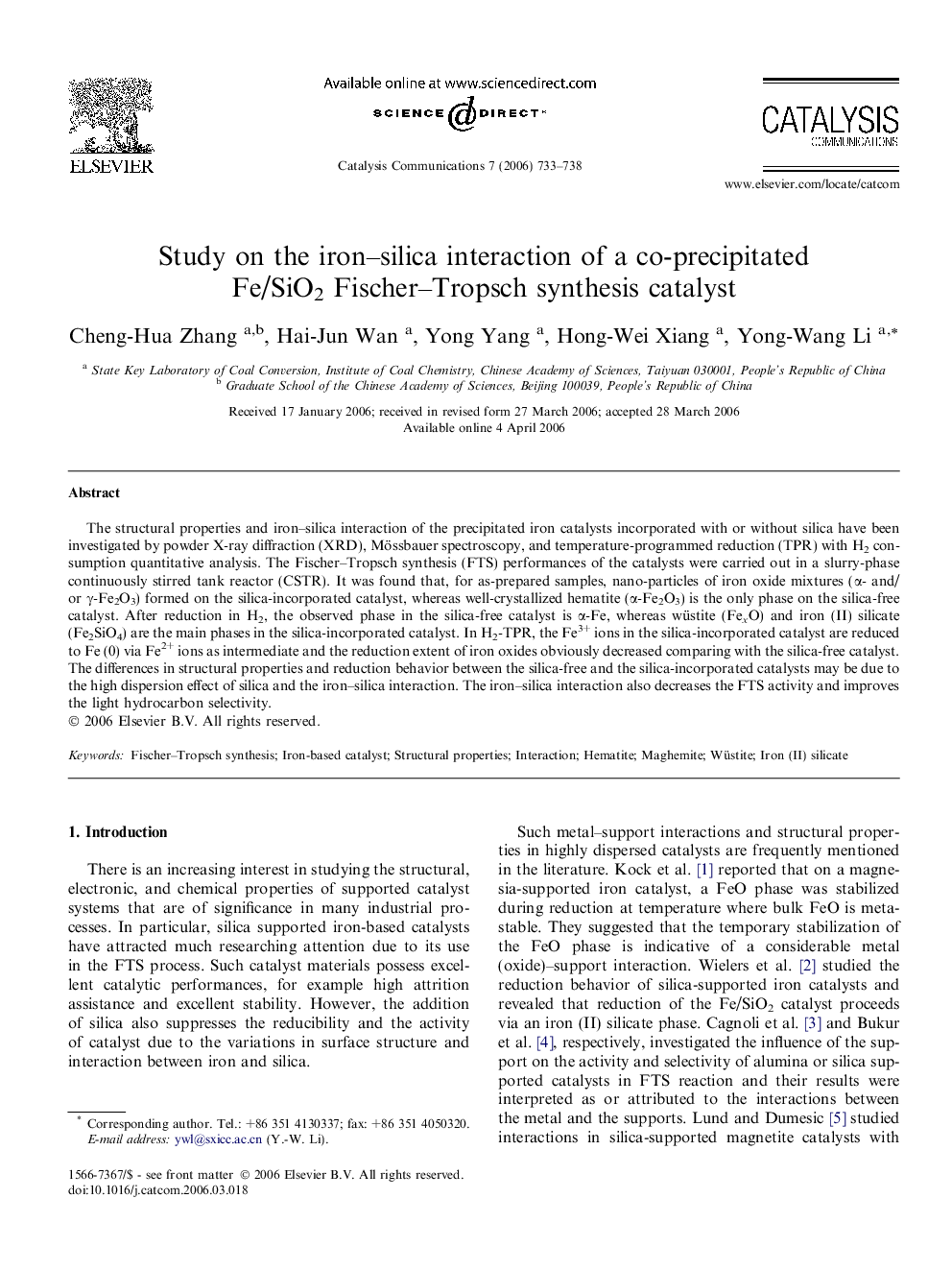| کد مقاله | کد نشریه | سال انتشار | مقاله انگلیسی | نسخه تمام متن |
|---|---|---|---|---|
| 52646 | 46879 | 2006 | 6 صفحه PDF | دانلود رایگان |

The structural properties and iron–silica interaction of the precipitated iron catalysts incorporated with or without silica have been investigated by powder X-ray diffraction (XRD), Mössbauer spectroscopy, and temperature-programmed reduction (TPR) with H2 consumption quantitative analysis. The Fischer–Tropsch synthesis (FTS) performances of the catalysts were carried out in a slurry-phase continuously stirred tank reactor (CSTR). It was found that, for as-prepared samples, nano-particles of iron oxide mixtures (α- and/or γ-Fe2O3) formed on the silica-incorporated catalyst, whereas well-crystallized hematite (α-Fe2O3) is the only phase on the silica-free catalyst. After reduction in H2, the observed phase in the silica-free catalyst is α-Fe, whereas wüstite (FexO) and iron (II) silicate (Fe2SiO4) are the main phases in the silica-incorporated catalyst. In H2-TPR, the Fe3+ ions in the silica-incorporated catalyst are reduced to Fe (0) via Fe2+ ions as intermediate and the reduction extent of iron oxides obviously decreased comparing with the silica-free catalyst. The differences in structural properties and reduction behavior between the silica-free and the silica-incorporated catalysts may be due to the high dispersion effect of silica and the iron–silica interaction. The iron–silica interaction also decreases the FTS activity and improves the light hydrocarbon selectivity.
Journal: Catalysis Communications - Volume 7, Issue 9, September 2006, Pages 733–738